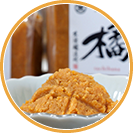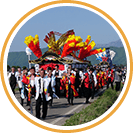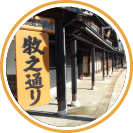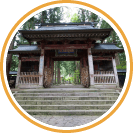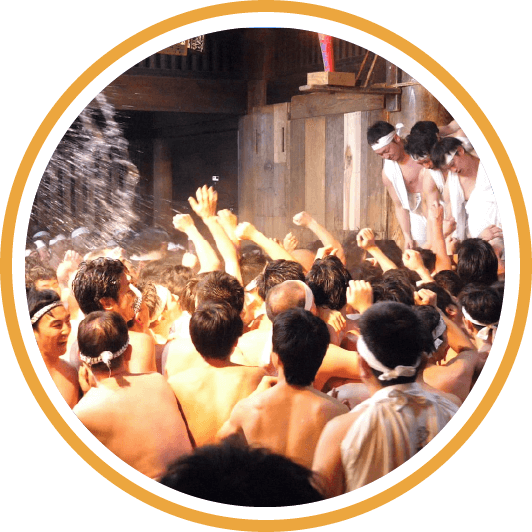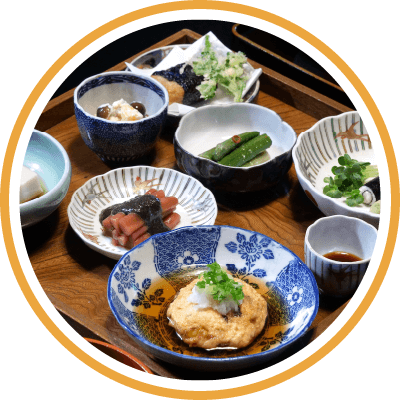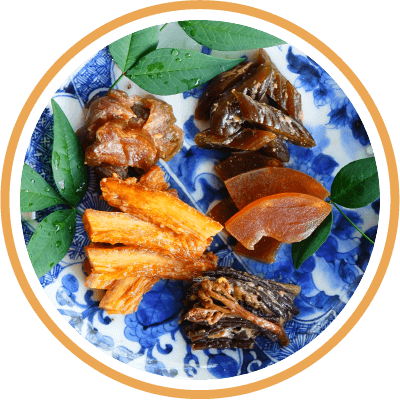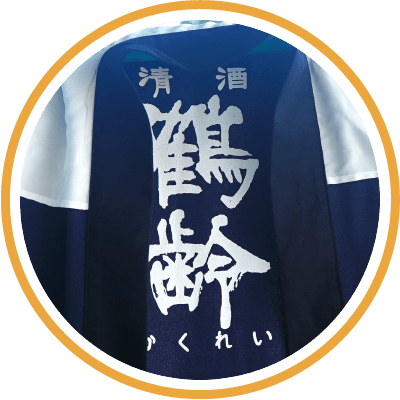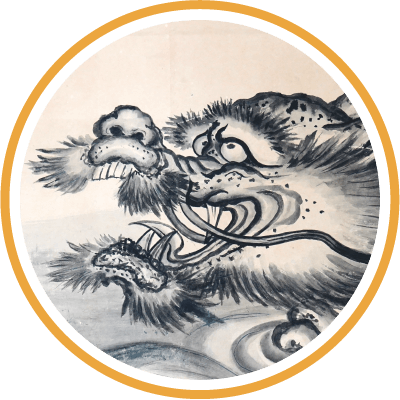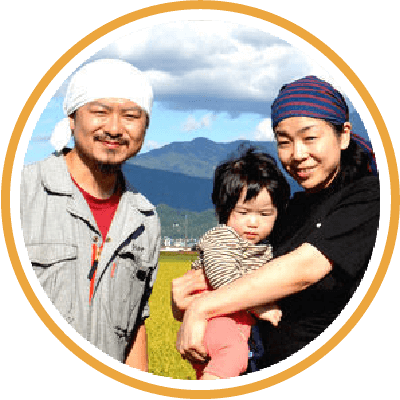Welcoming the Spirits of New Year With Traditional Decorations
Takejirou

New Year’s decorations are an essential part of welcoming the New Year.
People will prepare their homes by hanging shimenawa on the familial household shrine, and furnishing the entryway with shimekazari.
Shimenawa are sacred ropes woven out of rice straw festooned with traditional paper streamers called shide. Shimekazari are colorful and intricate decorations meant to bring luck in the New Year. They usually consist of a woven shimenawa assembled alongside other auspicious items such as oranges or cranes. Both shimenawa and shimekazari are used as New Year’s decorations.
Displaying these New Year’s decorations is believed to signal that a place is pure as well as sacred. Shimenawa are also seen as a beacon that guides the New Year Gods as they visit each household.
According to Shinto belief, the New Year Spirits are the deities responsible for a bountiful harvest, and have been widely worshipped by the Japanese people who have engaged in rice cultivation since ancient times.
After the rice harvest, they would hang up shimenawa to give thanks for the blessings of heaven and earth, and pray for a bountiful harvest in the following year.
Over time, the meaning of this blessing expanded to include economic prosperity and familial happiness. Today, even those not involved in agriculture will pray for a “fruitful and prosperous year” through these New Year’s decorations.
Rice farming has prospered in Minamiuonuma since long ago, and during the deep snowy winter months, many farmers made their living by making straw products such as shimenawa and straw sandals called waraji.
Although the types of New Year's decorations vary from region to region, they all have the same purpose: to serve as a landmark to welcome the gods, and purify the place they adorn.
The shape of a shimenawa may vary significantly depending on the region it comes from.
In the Kanto area, many people adorn their entranceways with brightly decorated tamakazari, (circular ornaments) to pray to the gods for business prosperity. The name originates from the shimenawa being looped and tied to make a wreath-like circle, onto which other decorations are then hung.
The familial shinto altar is also decorated with a shimenawa called daikonjime, to indicate the boundaries of this sacred space. Like the name implies, the daikonjime rope resembles the shape of a daikon radish, tapered at the tip but substantially thicker towards the middle and end.
In Minamiuonuma, where rice cultivation thrives, the shimenawa ropes used to decorate Shinto altars have a particularly unique shape.
The straw hanging down from the shimenawa is said to represent the rain that is vital for an abundant harvest. Additionally, the rope is decorated with ears of rice as a sign of the harvest.
After January 7th, the ornaments where the New Year Spirits resided for the week will be returned to the heavens in a fire festival called dondoyaki. The dondoyaki ceremony will usually occur at a local shrine or neighborhood meeting ground. Once the New Year’s week is over, the entranceway decorations and shimenawa that have served their purpose are collected and burned in this bonfire. Old amulets, charms and talismans along with daruma can also be disposed of at the same time.
Takejirou creates New Year decorations that purposefully use domestically produced materials.
The rice straw we use is grown right here in Minamiuonuma, and every step from cultivation to processing is done in-house. The area planted is 14 hectares, about 3.5 times the size of the Tokyo Dome. The rice straw is harvested between July and August before the ears of rice have ripened, when it is still a deep green, to be used as rice straw for the shimekazari ornaments. Once harvested, the straw is left to dry out then woven into shimekazari from September to November.
The decorations are carefully assembled one by one with the help of local craftsmen and women, so that customers may experience the high quality and warmth that only handmade decorations can provide. Artisans skilled in processing straw and making decorative twisted paper cords called mizuhiki are absolutely indispensable for this task.
At Takejirou, we will continue to work from here on out to preserve the traditional skills rooted in the local community of Minamiuonuma City, and pass them on to the next generation.
Narrator: Managing Director Masakazu Yamamoto
Photo Gallery
Movie Clip
Site Information

| Name | Takejirou |
|---|---|
| Address | 611-1 Ootsuki, Minamiuonuma, Niigata |
| Telephone | 025-772-7608 |
| Business hours | April~December 8:00~17:30/January~March 8:30~17:30 |
| Regular holiday | Saturday and Sunday, Public Holidays |
| Parking Lot | 6 Spaces |


